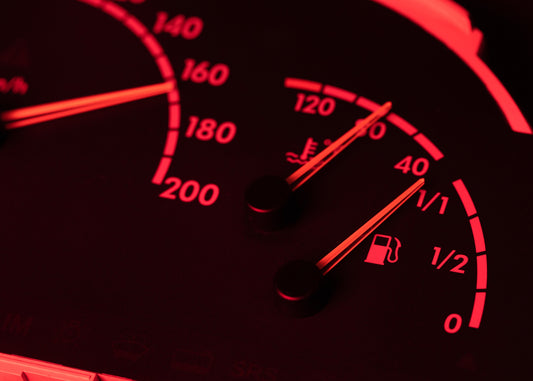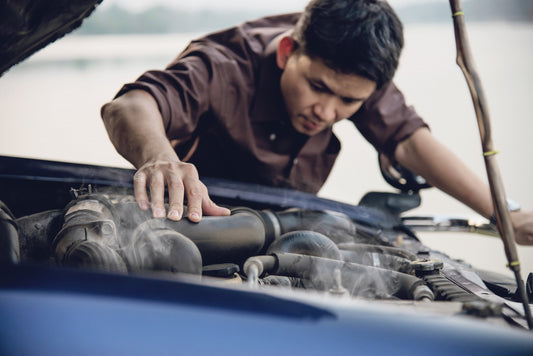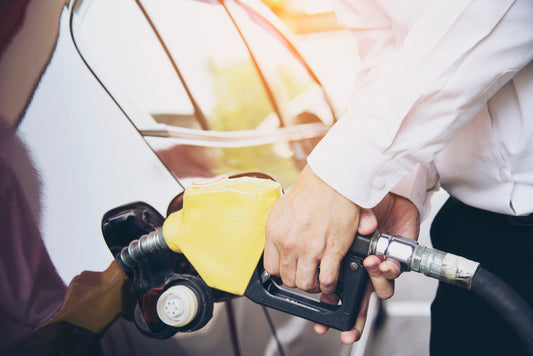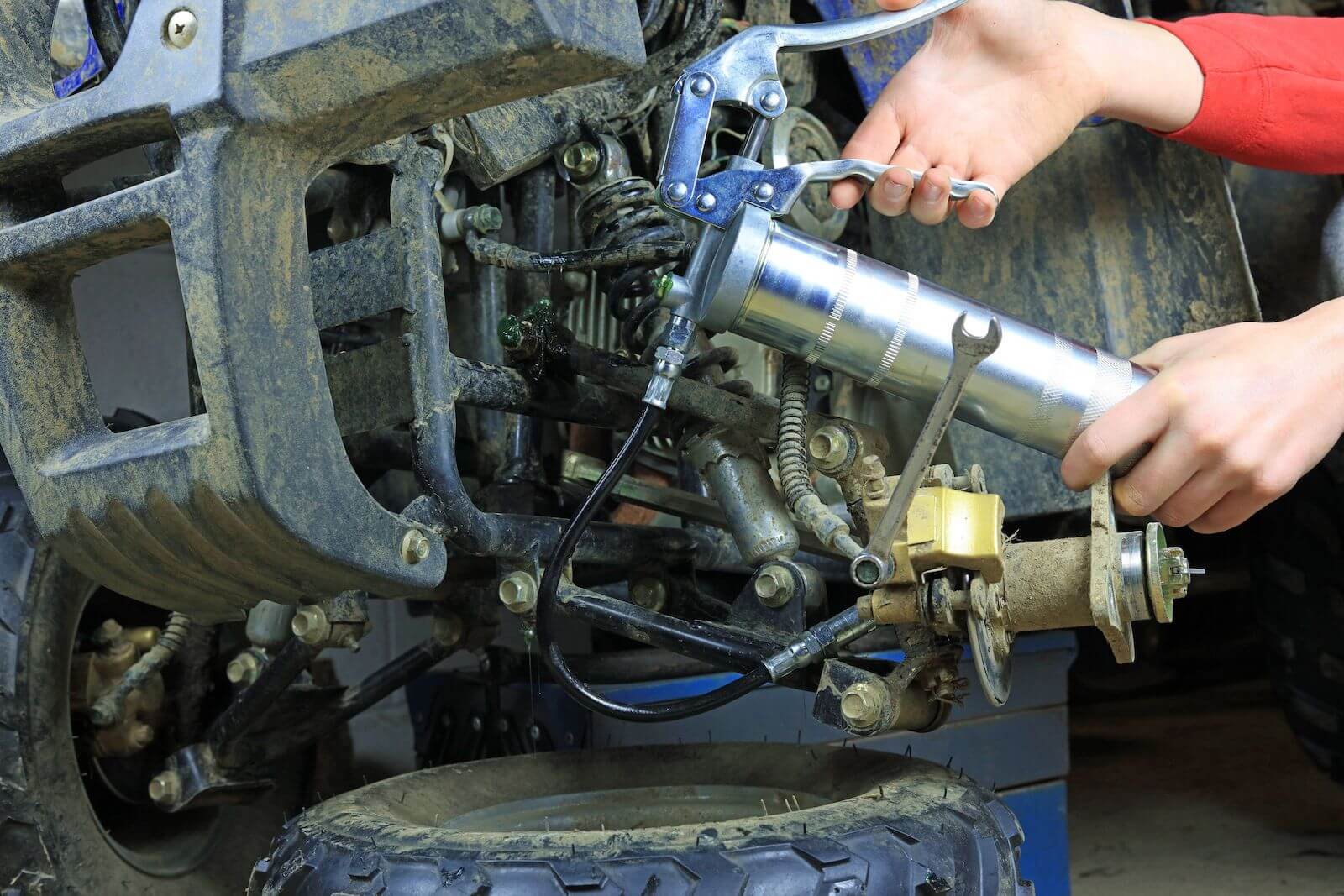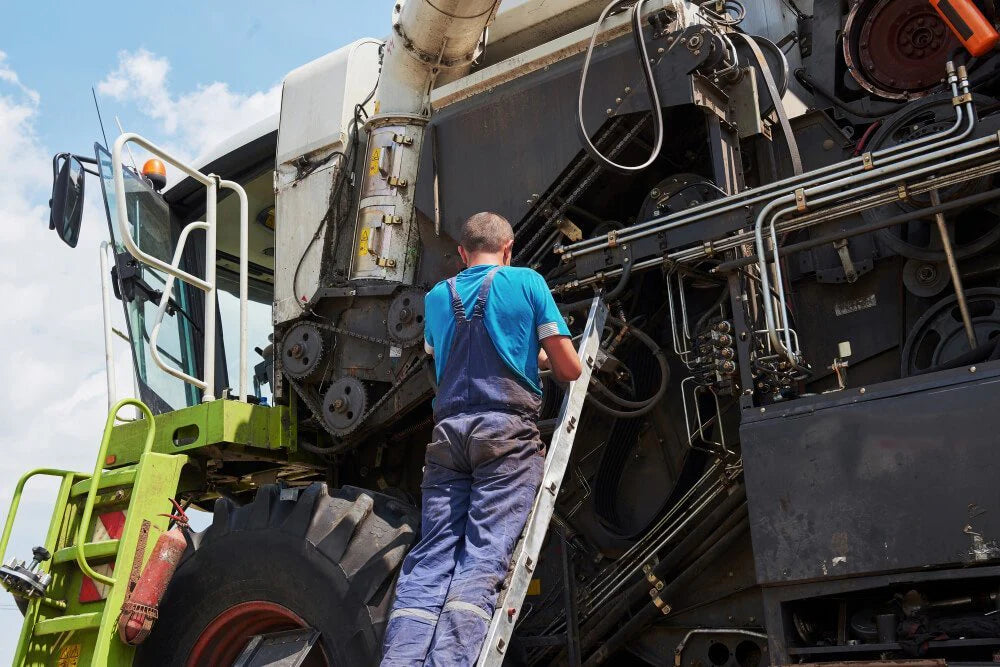When you need to use your grease gun you need it to work! But why are there so many issues with grease guns leaking? Not pumping? And creating a giant mess? To answer these questions and make sure you are greasing trouble free let’s identify the different parts that make up a grease gun.
Not only will this help you prepare for use, but a proper understanding of your grease gun will help you increase its lifespan, ensuring you are equipped long into the future.
Look the diagram of a standard grease gun.
This style of grease gun has been around since the early 1900s and hasn’t changed much. The main parts that create problems for people are the grease tube (messy), plunger, spring, and follower rod and follower handle. To use this grease gun:
- The follower rod is pulled back and locked in the back position.
- The barrel is unscrewed from the head.
- The old grease tube is removed and a new one is inserted.
- The barrel is screwed back into the head.
- The follower rod is unlocked and pressed all the way down.
- Air may have to be bled out through a bleeder valve or by loosening the head from the barrel.
The problem with this old style of grease gun is that grease will leak past the plunger, down around the spring, and eventually leak out of the barrel around the follower rod.
Lube-Shuttle® Grease Gun
Here is the anatomy of a Lube-Shuttle® grease gun.
This grease gun was designed in the early 2000s and has eliminated the problems found with standard grease guns. You will notice there is not spring, follower rod, or plunger. The head of the lube-shuttle® grease gun is threaded, and the cartridge is threaded as well. Therefore, the cartridge threads into the grease gun and the barrel does not have to be removed.
The other huge advantage of this greasing system is that the cartridge is sealed by a follower plate and will never leak! To load this grease gun here what you need to do:
- Unthread the old grease cartridge.
- Remove the cap from the new cartridge.
- Push up on the follower plate until ¼ inch of grease is up past the threads of the cartridge (this primes the system and eliminates air gaps)
- Thread the cartridge into the grease gun.
- Start greasing!
Here is a video showing a tube change in both the old style and lube-shuttle® systems: https://www.youtube.com/watch?v=qUMd4oQ9hxk
Let’s cover some frequently asked questions about grease guns and their components
1. How Do Grease Guns Work?
Grease gun differ slightly depending on the type of device you’ve chosen to use, but the basic premise is a mechanical pump is being used to pump grease into a joint or bearing through a grease fitting.
Typically, grease guns have a range of pressure outputs for greasing different types of machinery and vehicles such as tractors, construction equipment or automobiles.
2. What Are the Three Types of Grease Guns?
There are three types of devices that are commonly found in greasing kits.
Manual
Manual grease guns work on good old physical power. They are operable by either one or two hands, and are a perfect option for homeowners, hobby farmers, and people who perform occasional greasing.
Pneumatic
These are airpower grease guns and work nicely in shops or garages where you are always close to an air compressor.
Battery-powered
A battery-powered gun works like the pneumatic but has no cord – allowing you to work flexibly in a wide range of environments with no air or electrical outlets, or out on a job.
3. How Can I Improve My Grease Gun?
There are some key components to upgrading a grease gun that allow you greater use. These parts include different types of couplers such as:
- safeLOCK locking grease coupler
- 90-degree couplers
- driveshaft couplers
- safeLOCK long reach locking coupler
These options or upgrades can make it easier to grease driveshafts, PTO shafts, wheel bearings, and hard to reach fittings. Locking couplers ensure you don’t have to hold onto the coupler.
Hose upgrades
Is your current hose to short? To long? Or is a rigid pipe and you are looking for flexibility? Check out hose options to make sure you have the right set up for your equipment.
We typically recommend a 20inch hose for most greasing situations. If the hose is much shorter you must hold the grease gun closer to the fitting and that can be impossible when greasing hard to reach fittings.
4. What Do I Need to Know About Grease Gun Safety?
Take Care of Your Grease Gun
Unnecessary pressure can cause serious damage. Guns can deliver up to 15,000 psi and it’s important to know the right amount of pressure to apply to protect your machinery, your grease gun, and yourself.
Have Caution When Applying Grease
Not knowing how to precisely measure greasing can lead to damaged seals, fluid friction, and unwanted consumption.
Proceeding with caution can help you protect your machinery and avoid making mistakes. If you find yourself in any doubt about the capability of your grease gun in fixing a problem, be sure to consult one of our experts.




